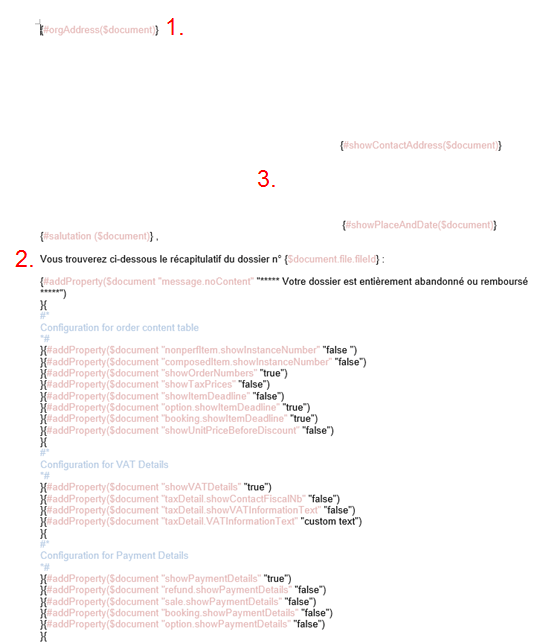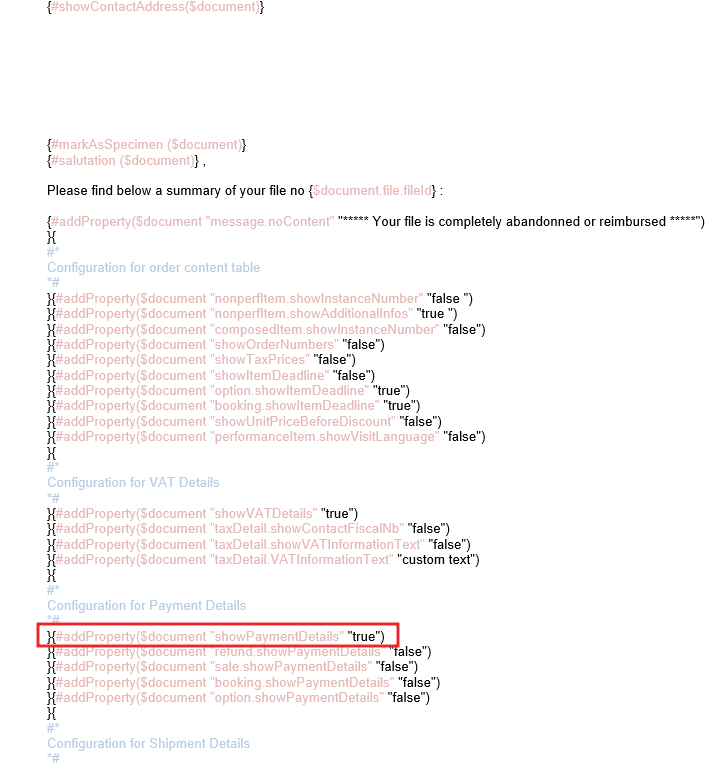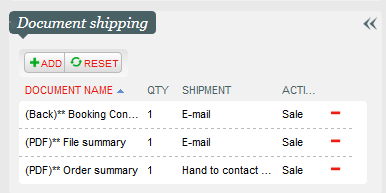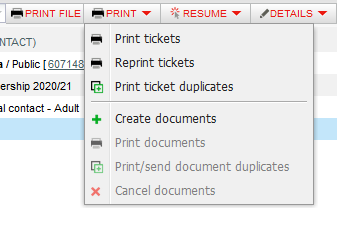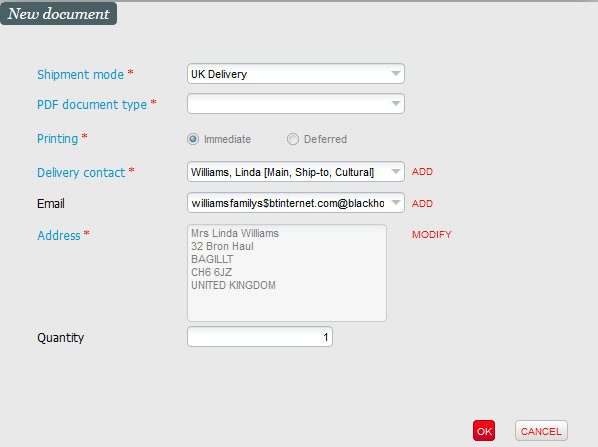The document editor is the xdoc tool.
It allows you to modify existing documents and create new ones.
Two main types of documents are available: emails and PDF documents.
Each type of document can be created in several languages.
The document templates are divided by category. E.g. File recap, Order invoice, Account creation email.
Depending on the action carried out, the system will search for the corresponding document in the existing templates. The standard document templates are proposed by default and can be customized.
We must differentiate:
- Automatic mailings (e.g. sending emails from online sales),
- Manual mailings (e.g. the operator issues a summary at the end of the order).
- These can also be set up with default behaviors (e.g. each time a reservation is made, a summary of the file is sent by email).
Visualization of a standard model
In the Institution context, from the list of document types, double-click on an existing document to display the standard template.
Clicking on the link displays the document in Word.
Review of a standard model
This Word document can be edited, saved and uploaded back into the relevant template.
There are different types of data on this template:
- Dynamic data: call to data in the database. E.g. Display the address of the organization in the document header.
- Static data
- Page layout
Modification of a standard model
The most obvious changes are those relating to:
- static data. E.g. Add a sentence "Thank you for your trust and see you soon" at the bottom of the page.
- and layout. E.g. readjust the height of the address for window envelopes.
Dynamic data can also be modified. E.g. Do not display the details of the payment method used by replacing true with false.
Creation of a new model
Instead of opening an existing document type, you can click on new to create a new document type. For example, to create a new type of File Summary for operators in the Groups and CE sales channel.
The standard template can be downloaded by default and modified in the same way as before.
The new documents created in this way can only be documents sent manually. There can only be one template for emails or other documents sent directly by the system so that it can identify the document to be sent.
Automatic sending of a document
All document sending from the online shop follows predefined processes that cannot be modified. The document itself can be modified at any time, but not the sending process.
Examples:
- Systematic sending of an email confirming the option request each time a user requests an option.
- Availability of a File Summary document from the online order history.
- Sending an Account Creation email when a new password is requested.
For these documents, only one template can exist so that the system knows which one to send.
Send document by default
The sending of documents following actions in the back office can be set by default.
In Organization > Documents to send, select :
- The sales channel involved
- The nature of the action (exchange, refund, option, reservation, sale)
- Type of document
- The quantity of document
- The shipment method used
These documents will be proposed by default in the sales and refund carts. The operator can, when performing the action, delete the default documents or add new ones.
Subsequent editing of documents
From the sales and refund carts, the operator can add new documents.
From the file details, the operator can create new documents or re-edit an existing document in the file.
He/she selects the type of document and the shipment method.

